
Colossus: The Forbin Project is a 1970 American science-fiction thriller film from Universal Pictures, produced by Stanley Chase, directed by Joseph Sargent, that stars Eric Braeden, Susan Clark, Gordon Pinsent, and William Schallert. It is based upon the 1966 science-fiction novel Colossus by Dennis Feltham Jones.

Invasion, U.S.A. is a 1952 American drama film based on a story by Robert Smith and Franz Spencer and directed by Alfred E. Green. The film stars Gerald Mohr, Peggie Castle and Dan O'Herlihy. Invasion, U.S.A. is set in the Cold War and portrays the invasion of the United States by an unnamed communist enemy which likely refers to the Soviet Union. It is typical of the Red Scare film genre, common throughout the 1950s.
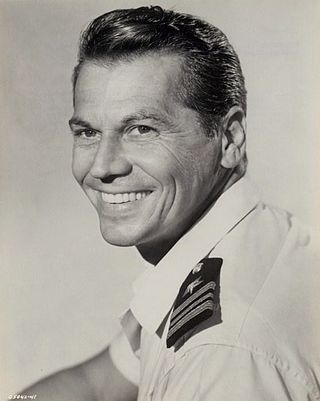
Ronald Egan Randell was an Australian actor. After beginning his acting career on the stage in 1937, he played Charles Kingsford Smith in the film Smithy (1946). He also had roles in Bulldog Drummond at Bay (1947), Kiss Me Kate (1953), I Am a Camera (1955), Most Dangerous Man Alive (1961) and King of Kings (1961).

John George Agar Jr. was an American film and television actor. He is best known for starring alongside John Wayne in the films Sands of Iwo Jima, Fort Apache, and She Wore a Yellow Ribbon. In his later career he was the star of B movies, such as Tarantula!, The Mole People, The Brain from Planet Arous, Revenge of the Creature, Flesh and the Spur and Hand of Death. He was the first husband of Shirley Temple.

Monstrosity is a 1963 American science fiction horror film produced by Jack Pollexfen and Dean Dillman Jr. and directed by Joseph V. Mascelli. The film stars Marjorie Eaton, Frank Gerstle, Erika Peters, and Xerxes the cat. It tells the story of a wealthy elderly woman who wants to have her brain transplanted into the head of a young woman. Actor Bradford Dillman, the younger brother of co-writer and producer Dean Dillman, Jr., narrated the film.

When Worlds Collide is a 1951 American science fiction disaster film released by Paramount Pictures. It was produced by George Pal, directed by Rudolph Maté, and stars Richard Derr, Barbara Rush, Peter Hansen, and John Hoyt. The film is based on the 1933 science fiction novel of the same name, co-written by Edwin Balmer and Philip Wylie.
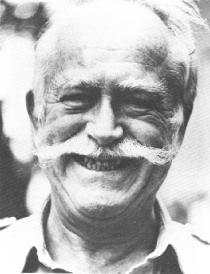
Albert Zugsmith was an American film producer, film director and screenwriter who specialized in low-budget exploitation films through the 1950s and 1960s.

The Man from Planet X is a 1951 independently made American black-and-white science fiction horror film, produced by Jack Pollexfen and Aubrey Wisberg, directed by Edgar G. Ulmer, that stars Robert Clarke, Margaret Field, and William Schallert. The film was distributed by United Artists.
Port Sinister is a 1953 American independently made black-and-white adventure science fiction film, produced by Jack Pollexfen and Albert Zugsmith, and directed by Harold Daniels. The film was written by Jack Pollexfen and Aubrey Wisberg and stars James Warren, Lynne Roberts, and Paul Cavanagh. Port Sinister was theatrically distributed by RKO Radio Pictures.
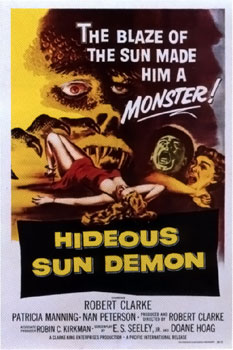
The Hideous Sun Demon is a 1958 American science fiction horror film produced, directed, and cowritten by Robert Clarke, who also starred in the title role. It also stars Patricia Manning, Nan Peterson, Patrick Whyte, and Fred La Porta. The film focuses on a scientist who is exposed to a radioactive isotope and soon finds out that it comes with horrifying consequences.

Robert Irby Clarke was an American actor best known for his cult classic science fiction films of the 1950s. In succeeding decades he appeared in more conventional television, and in The King Family Show, a variety show based on the family of which his wife Alyce King Clarke was a member.

Tarzan and the Slave Girl is a 1950 American adventure film directed by Lee Sholem and starring Lex Barker as Tarzan, Vanessa Brown as Jane, and Robert Alda as big game hunter Neil. The fourteenth film of the Tarzan film series that began with 1932's Tarzan the Ape Man, the plot involves a lost civilization in Africa, a strange illness, and an evil counselor manipulating a prince into kidnapping large numbers of local women.

Frankenstein Island is a 1981 science fiction horror film produced, written, composed, edited and directed by Jerry Warren and starring John Carradine and Cameron Mitchell. The plot concerns a group of balloonists stranded on an island where they are captured by Dr. Frankenstein's female descendant, Sheila Frankenstein, who has been kidnapping shipwrecked sailors for years and turning them into zombies.

At Sword's Point, also known as Sons of the Three Musketeers, is a 1952 American historical action adventure film directed by Lewis Allen and starring Cornel Wilde and Maureen O'Hara. It was shot in Technicolor by RKO Radio Pictures. The film was completed in 1949, but was not released until 1952.
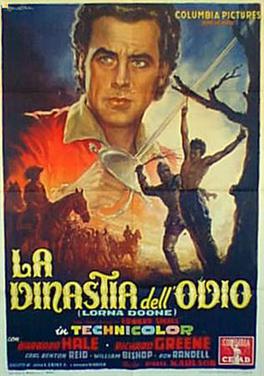
Lorna Doone is a 1951 American adventure film directed by Phil Karlson and starring Barbara Hale and Richard Greene. It is an adaptation of the 1869 novel Lorna Doone by R. D. Blackmore, set in the English West Country during the 17th century.
Jack Pollexfen (1908–2003) was an American writer, director and producer.
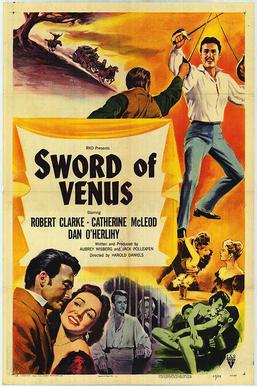
Sword of Venus is a 1953 American adventure film directed by Harold Daniels, written by Jack Pollexfen and Aubrey Wisberg, and starring Robert Clarke, Catherine McLeod, Dan O'Herlihy, William Schallert and Marjorie Stapp. It was released on February 20, 1953, by RKO Pictures. It was also released in the U.K. as The Island of Monte Cristo.
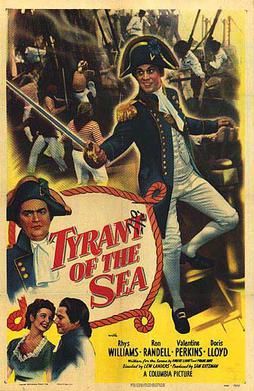
Tyrant of the Sea is a 1950 American historical war film set during the Napoleonic Wars and starring Ron Randell, Rhys Williams and Lester Matthews. It was directed by Lew Landers.

Storm Over Tibet is a 1952 American adventure film directed by Andrew Marton and starring Rex Reason and Diana Douglas.

Most Dangerous Man Alive is a 1961 black-and-white American science fiction film, produced by Benedict Bogeaus, directed by Allan Dwan, that stars Ron Randell, Debra Paget, and Elaine Stewart. The film was distributed by Columbia Pictures.


















